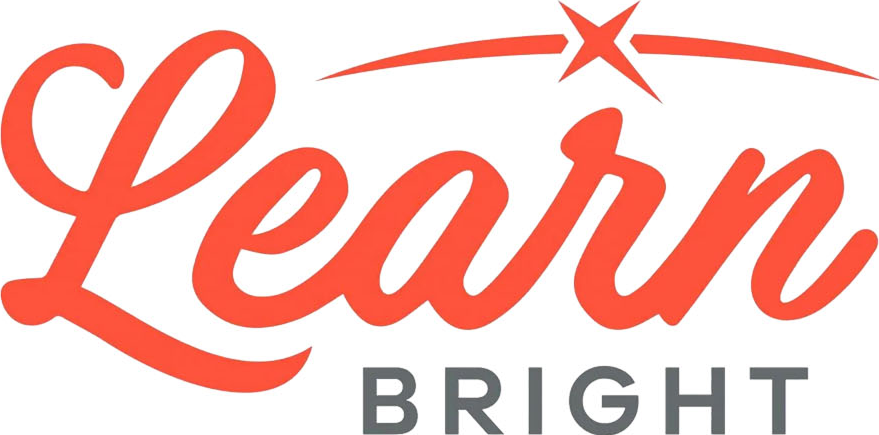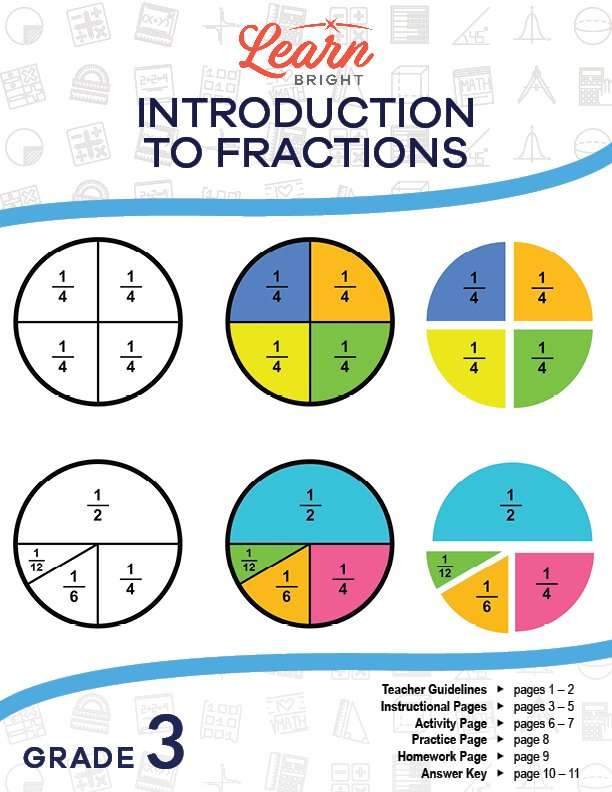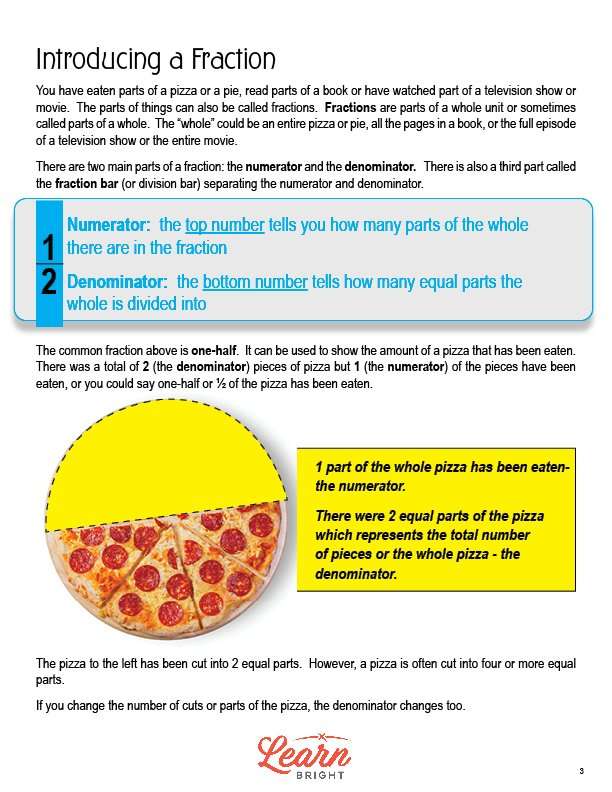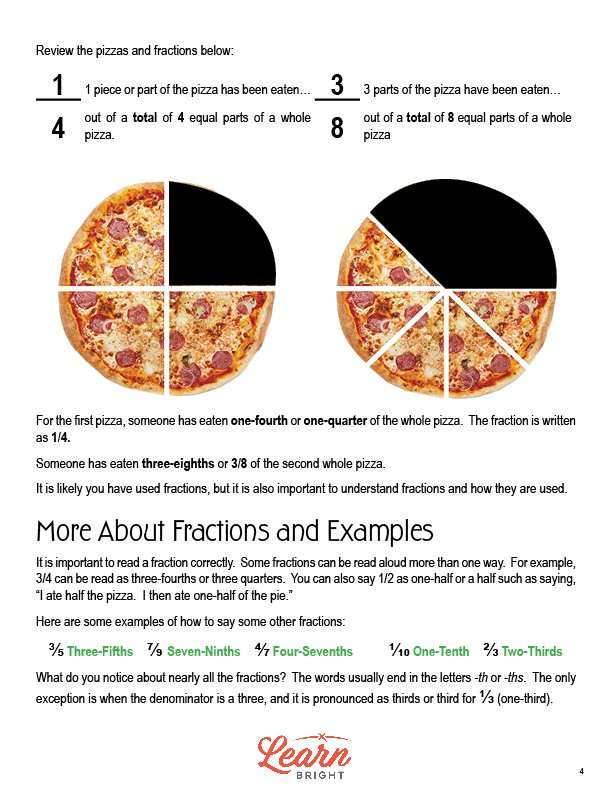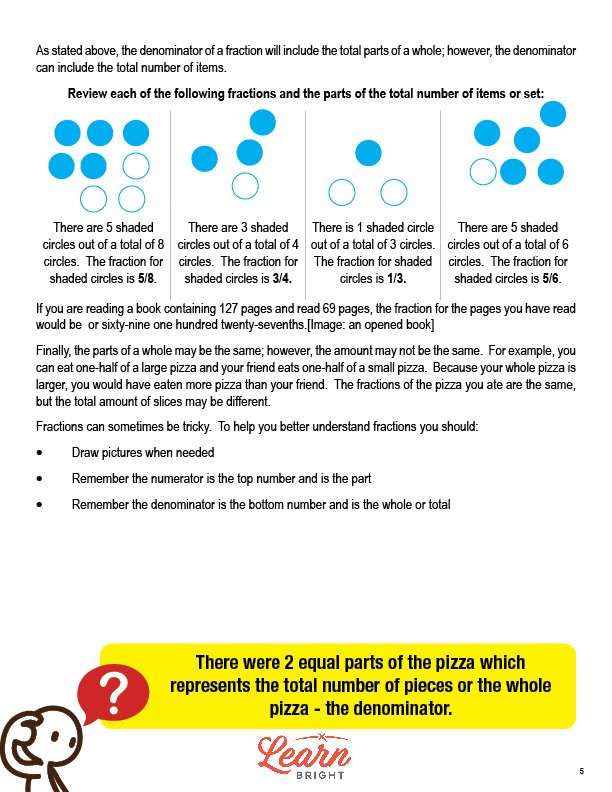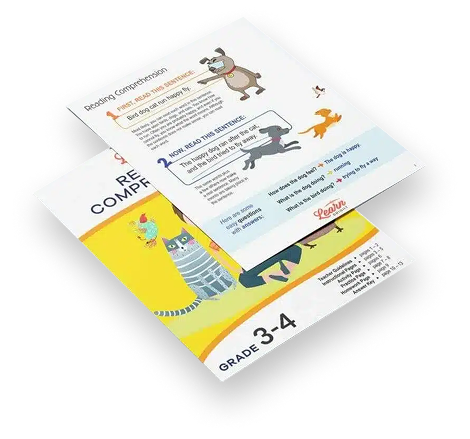Description
What our Introduction to Fractions lesson plan includes
Lesson Objectives and Overview: Introduction to Fractions teaches students the basics about fractions, including what they are and how they are used in mathematics. At the end of the lesson, students will be able to develop a basic understanding of fractions and explain and demonstrate how a whole is partitioned into equal parts. This lesson is for students in 3rd grade.
Classroom Procedure
Every lesson plan provides you with a classroom procedure page that outlines a step-by-step guide to follow. You do not have to follow the guide exactly. The guide helps you organize the lesson and details when to hand out worksheets. It also lists information in the blue box that you might find useful. You will find the lesson objectives, state standards, and number of class sessions the lesson should take to complete in this area. In addition, it describes the supplies you will need as well as what and how you need to prepare beforehand.
Options for Lesson
Included with this lesson is an “Options for Lesson” section that lists a number of suggestions for activities to add to the lesson or substitutions for the ones already in the lesson. If you’d like to expand the lesson activity, you can include additional fractions. You could also assign each pair of students one fraction for an activity and have them create a single poster with images representing the fraction. For an additional activity, you could distribute candies, such as M&Ms, and have your students use them to demonstrate fractions. Finally, for another activity, you could use the whole class as the “denominator” and then create fractions based on student characteristics like hair or eye color.
Teacher Notes
The teacher notes page includes a paragraph with additional guidelines and things to think about as you begin to plan your lesson. This page also includes lines that you can use to add your own notes as you’re preparing for this lesson.
INTRODUCTION TO FRACTIONS LESSON PLAN CONTENT PAGES
Introducing a Fraction
The Introduction to Fractions lesson plan includes three pages of content. If you’ve ever eaten part of a pizza or read part of a book, you’ve eaten or read a fraction! Fractions are parts of a whole. The whole can be something like a pizza or a book, or it can be a number.
Fractions have two main parts, a numerator and a denominator. They also have a third part, the fraction bar (or division bar), which separates the numerator and denominator. The numerator is the top number. It tells you how many parts of the whole there are in the fraction. The denominator is the bottom number. It tells you how many equal parts the whole is divided into.
Take the fraction 1/2, for example. We can use this fraction to show the amount of pizza eaten if there were a total of 2 pieces of pizza and 1 has been eaten. You could say that half or 1/2 of the pizza has been eaten! If you cut a pizza into more than 2 pieces, the denominator of your fraction would also change. For example, if you cut it into 4 pieces and ate 1, the fraction would be 1/4 (or one-fourth or one-quarter). If you cut it into 8 pieces and ate 3, the fraction would be 3/8 (or three-eighths).
More About Fractions and Examples
You need to make sure you’re reading fractions correctly, especially when they can be read more than one way. For example, we can read 3/4 as three-fourths or three quarters. 1/2 can be one-half or a half. 3/5 is three-fifths, 7/9 is seven-ninths, 4/7 is four-sevenths, 1/10 is one-tenth, and 2/3 is two-thirds. The denominator of a fraction is the total parts of a whole; however, the denominator can also include a total number of items.
The lesson next shows a few examples with illustrations. For the first example, the lesson shows eight circles with five shaded in. The fraction of shaded circles in this example is 5/8. The lesson includes three more examples like this.
If you’re reading a book with 127 pages and read 69 of them, the fraction of the pages you have read is 69/127 or sixty-nine one hundred twenty-sevenths.
Finally, sometimes you’ll have the same parts of a whole but the actual amounts are different. For example, if you eat 1/2 of a large pizza and your friend eats 1/2 of a small pizza, you’ve eaten the same fraction of each pizza but you’ve also eaten a different amount of pizza because yours is larger!
Working with fractions can be tricky sometimes. If you ever get confused, try drawing pictures! Always remember that the numerator is the top number as is a part of a whole, while the denominator is the bottom number and is the whole or total.
INTRODUCTION TO FRACTIONS LESSON PLAN WORKSHEETS
The Introduction to Fractions lesson plan includes three worksheets: an activity worksheet, a practice worksheet, and a homework assignment. You can refer to the guide on the classroom procedure page to determine when to hand out each worksheet.
MATCHING ACTIVITY WORKSHEET
Students will work with a partner to complete the lesson activity. Each pair will cut out the fractions and words printed on the worksheet and match them correctly. They will then create and color a poster that shows each fraction as a drawing.
IDENTIFYING FRACTIONS PRACTICE WORKSHEET
For the practice worksheet, students will first look at rectangles and identify the fraction for each shaded part. Next, they will look at pictures of sets of objects and identify the fraction for the colored part of each set. Finally, they will answer six questions about the lesson material.
INTRODUCTION TO FRACTIONS HOMEWORK ASSIGNMENT
The homework assignment asks students to first look at rectangles and tell what parts of each are shaded and unshaded. They will then draw pictures to show each of the six fractions written on the worksheet.
Worksheet Answer Keys
This lesson plan includes answer keys for the practice worksheet and the homework assignment. If you choose to administer the lesson pages to your students via PDF, you will need to save a new file that omits these pages. Otherwise, you can simply print out the applicable pages and keep these as reference for yourself when grading assignments.
